Trade Show Marketing Strategies | Tips & Tricks
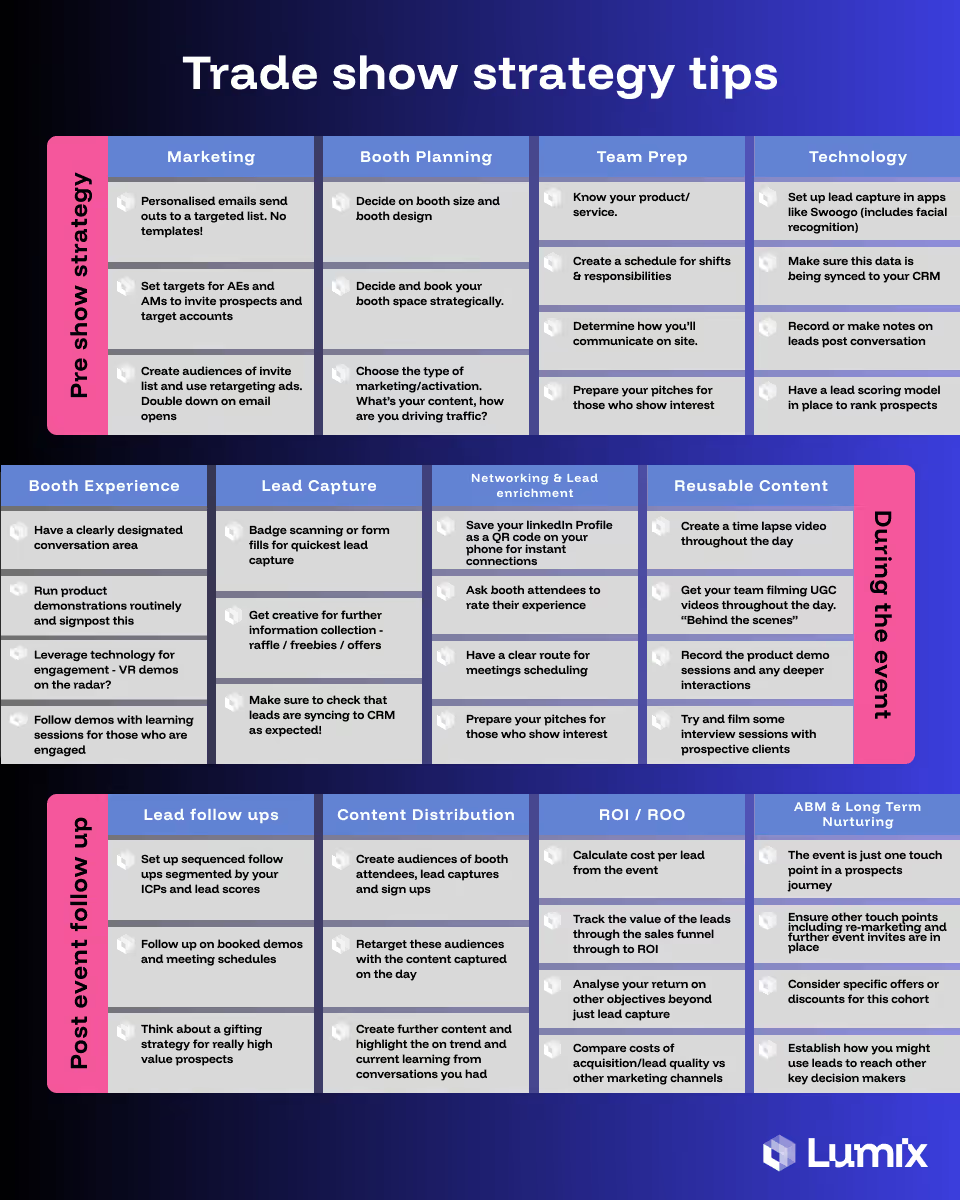
Weekly newsletter
Trade shows are back in a big way. Q4 2024 recorded the strongest level of activity since the pandemic, and the B2B trade show market closed the year at over $15 billion in value. Events like CES, HIMSS, and NRF Big Show have drawn thousands of decision-makers, reaffirming the role of in-person events, a topic we’ve written more about in our B2B event trend blog
If you are planning ways to strengthen your trade show marketing strategy, the opportunity is clear. Trade shows offer something digital channels cannot fully replace: real conversations, firsthand product experiences, and direct relationship-building with your key audiences.
Our team has worked with the likes of Adyen, Spotify, Mercedes Benz and more at trade shows and expos. We’ve seen that audiences today are not just looking for another booth visit. They expect valuable conversations, interactive experiences, and meaningful engagement. To deliver real impact and measurable outcomes, trade show marketing now demands a more strategic, insight-driven approach.
Take a look at the likes of Encore and their space at IMEX Frankfurt 2025, they’ll be launching their Transformation Takes Flight experience - curated user journeys in real life based on real time needs.
In this article, we will walk through how to plan, execute, and follow up on trade shows in a way that maximises impact, deepens engagement, and drives growth. Here's our downloadable checklist that will help you in your planning process too:
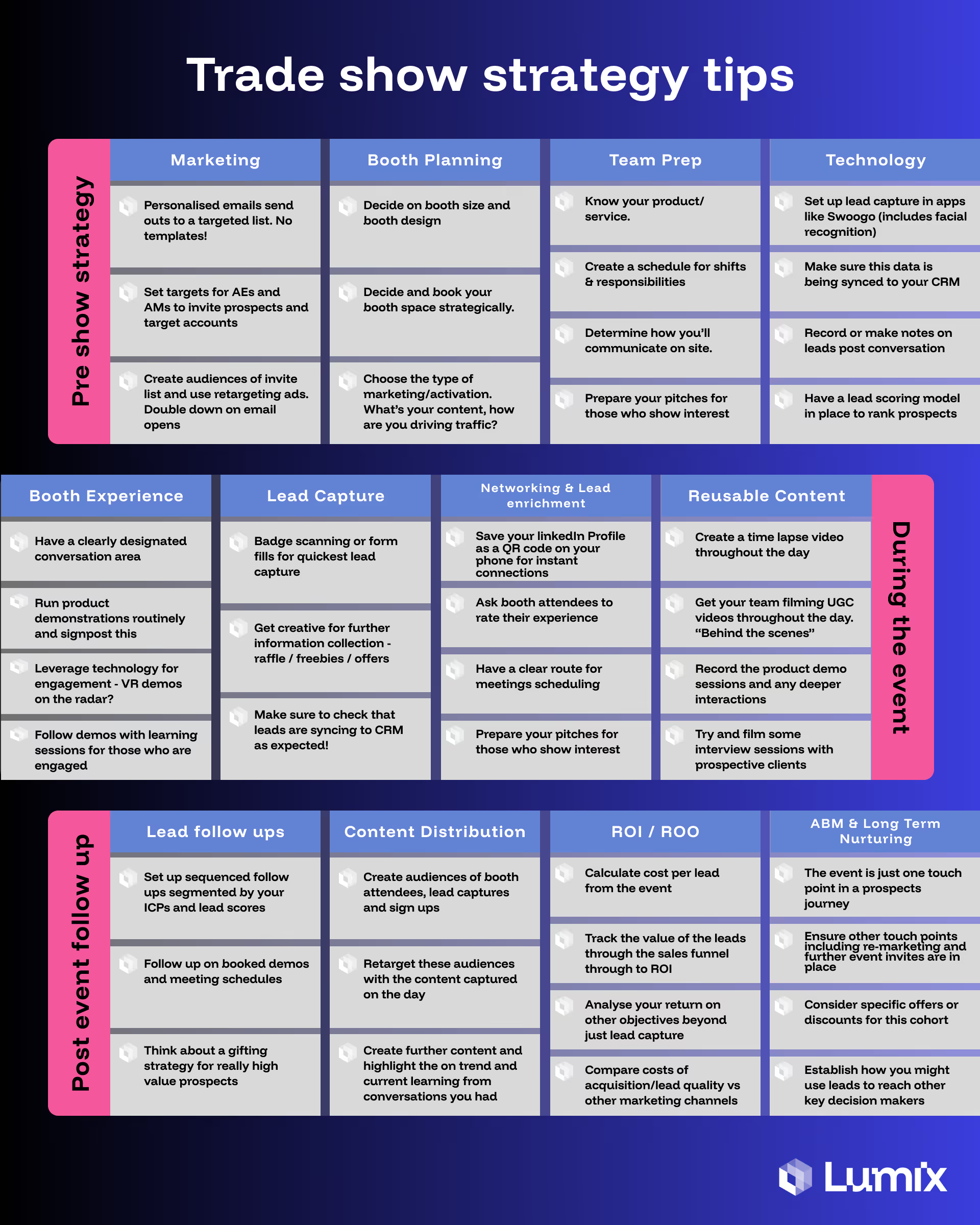
Pre-Show Strategy: Laying the Foundation for ROI
You already know how important the planning phase of a trade show can be. It’s where expectations are set, resources are aligned, and strategy takes shape. This is your chance to get the team on the same page, map out budget and logistics, and ensure every decision supports a measurable outcome.
Here are a few strategies to help you plan with intention and maximise your return when the show opens.
Set Goals That Tie Directly to Business Impact
Too often, teams walk into trade shows with broad ambitions, generate leads, drive awareness, and connect with buyers. But without specificity, those goals rarely translate into results.
Start by mapping your objectives to business outcomes. Are you aiming to accelerate late-stage deals? Build top-of-funnel awareness in a new region? Create executive visibility?
Use a simple framework to guide your planning:
Outcome → Metric → Tactic.
- Outcome: Expand into a new vertical
- Metric: 30 qualified leads from target industries
- Tactic: Targeted outreach and hosted sessions
The more clearly your team understands the why behind your presence, the more effectively they’ll execute on the how. Clear targets guide the booth and they shape every conversation and follow-up after it.
But the bottom line numbers aren’t the be all and end all (sorry finance). Your marketing intuition will also help your measurement against ROO (return on objective) and ROE (return on experience) - how customers feel leaving your trade stand is super important for the longer term sales cycles. You might not hit the sign up there and then but good booth design, engaging experiences and more can go a long way in staying front of mind in the long run.
Build a Budget That Can Stand Up to Scrutiny
Trade shows demand significant investment, often consuming over 30% of the marketing budget. And with rising costs, tightening budgets, and increasing expectations, they’re often the first place leadership looks when asking where to trim.
You’ve probably been in that room. A board meeting, a quarterly review, or a finance check-in where someone asks, "Do we really need to spend this much on events? It’s a common pressure, with 75% of exhibitors reporting that they’re being asked to cut costs, even when expectations haven’t changed.
This is where clarity in budgeting makes a real difference. Break down your event spend across core areas like design, travel, supplier services, and promotion, and align each with a clear objective, whether that’s lead volume, pipeline value, or partner engagement.
This is one of the key issues we’re solving at Lumix.We help teams get early visibility on supplier pricing and bring more structure to the process, so you’re not making decisions in a rush or without context. When your budget tells a clear story, it’s easier to earn buy-in, show progress, and reinvest with confidence in the moments that matter most.
Design a Booth Experience That’s Backed by Smart Setup and Supplier Control
If you’ve ever led the charge on trade show logistics, you know the stress doesn’t start on show day. It starts with sourcing, supplier coordination, and getting everything in place on time, on brand, and on budget. And you’re not alone. In fact, 72% of exhibitors say charges for floorspace and utilities as one of their biggest venue challenges, and many end up paying more simply because early planning slipped or supplier issues snowballed.
This is where strong setup planning and supplier management can give you a real edge. Your booth is often your first impression. It should communicate who you are, invite interaction, and support real conversations. When done well, setup and design act as an extension of your marketing message instead of just a backdrop.
Some of the best-performing brands are creating spaces that guide the experience. Open layouts that pull visitors in, clear signage that tells them what you do, and well-placed product zones invite hands-on exploration. Similarly, AR product previews, VR walk-throughs, or live content displays make offerings more immersive.
To deliver that kind of experience, teams need a streamlined way to manage sourcing, budgets, and execution without the usual friction. Lumix brings these pieces together in a single platform, helping marketers connect with reliable suppliers, track spend in real time, and stay in control of every moving part behind the scenes.
Prepare Your Team to Perform
Your team may already have the experience, the product knowledge, and the right intentions. But without clear alignment and preparation, it’s easy to miss the moment when it counts.
At trade shows, 81% of attendees have buying authority. That means nearly everyone who steps into your booth could influence a deal. But here’s the catch: only 6% of exhibitors feel confident converting leads on the floor.
That gap is where advantage lives. Before the event, take the time to align on goals, talking points, and lead capture workflows. Role-play common scenarios. Make sure your team understands how to qualify interest, how to guide conversations naturally, and how to hand off warm leads for next steps.
When your team is confident, cohesive, and working from a shared playbook, they’re representing your brand in a way that builds trust, deepens interest, and creates real momentum.
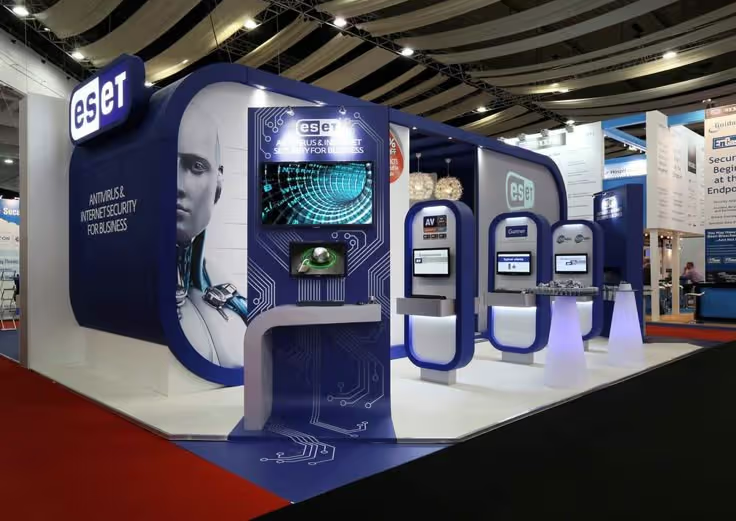
On-Site Execution: Turning Attention Into Results
On-site execution is just as important as the planning that got you there. The floor is where strategy turns into real outcomes: pipeline, partnerships, and brand visibility.
With your booth live and your team ready, every interaction can become a chance to deliver value and move the right people closer to action. Here's how to make the most of those moments:
Deliver a Booth Experience That Pulls People In
Trade show floors are noisy, fast-moving, and full of distractions. You need an experience that makes people stop, lean in, and want to learn more.
Start with intent. What’s the first thing someone sees when they walk past your booth? Does it tell them what you do or why it matters to them? The best booths answer that question instantly, without making someone hunt for it. Keep the messaging sharp, the layout open, and the experience active. Let people touch, try, or hear something that sticks with them.
If you're revealing a new product or campaign, make it feel personal. Use live walkthroughs, short demos, or even interactive formats that help the message land. What people remember most is how it made them feel.
And while design draws them in, delivery is what makes it all work. A missed shipment or slow setup can throw everything off. That’s where a more connected approach helps. Lumix supports marketing teams by bringing the right suppliers together under one platform, so your booth is ready to go when it matters most.
Engage Like a Partner, Not a Pitch
Once someone steps into your booth, the real work begins. A great experience doesn’t come from a scripted pitch, it comes from meaningful, two-way conversations.
Ask about their role, their challenges, or what they’re hoping to get from the event. These small questions open the door to more meaningful conversations and help your team tailor the discussion.
Encourage your reps to act more like consultants than sellers. Share insights, relate to real use cases, and focus on helping the attendee solve a problem. Quick demos, visual explainers, or hands-on product moments can help keep the exchange useful and memorable.
Involving the right people when needed, product leads, technical experts, or customer advocates can bring added depth and credibility. The goal is simple: make every interaction feel personal, valuable, and worth continuing after the show.
Capture Leads with Speed and Smarts
As a CMO, your first priority is to ensure that the leads you collect actually translate into business outcomes. You’ve likely already invested in a capture process, but it’s worth asking: is it built for quality, speed, and follow-through?
93% of exhibitors say that lead quality is the most important outcome from events. Yet too often, high-intent prospects slip through because teams don’t have the right tools or process in place. Your lead capture system should be directly linked to your CRM or MAP, allowing your team to:
- Instantly log conversations and contact details
- Tag leads by stage, interest, or buying role
- Trigger automated nurture or handoff workflows
- Prioritise follow-up based on fit and urgency
You will need qualifiers like "buying timeline," "pain point," or "product interest" that can help segment fast and effectively. And if a lead shows serious intent, make the next step easy: book a demo or meeting right at the booth.
Extend Your Presence Beyond the Booth
If you’re limiting your strategy to the footprint of your booth, you’re missing the bigger opportunity. Some of the highest-value interactions at a trade show happen in private meetings, speaker sessions, lounges, and low-key networking moments that build real connection.
Think beyond traffic metrics and map your presence across the event. Are your execs on stage? Promote their sessions in advance and use them to spark follow-up conversations at the booth. Planning a private dinner or off-site meetup? Make it invite-only and intentional. A well-curated side event often leaves a stronger impression than the booth itself.
During the show, stay agile. Check in with your team daily. What’s resonating? Where are the high-intent conversations happening? Use those insights to adjust your messaging or spotlight the right product stories. And don’t neglect the digital layer, posting real-time updates, tagging event hashtags, and sharing attendee moments on social media helps you stay visible even beyond the floor.
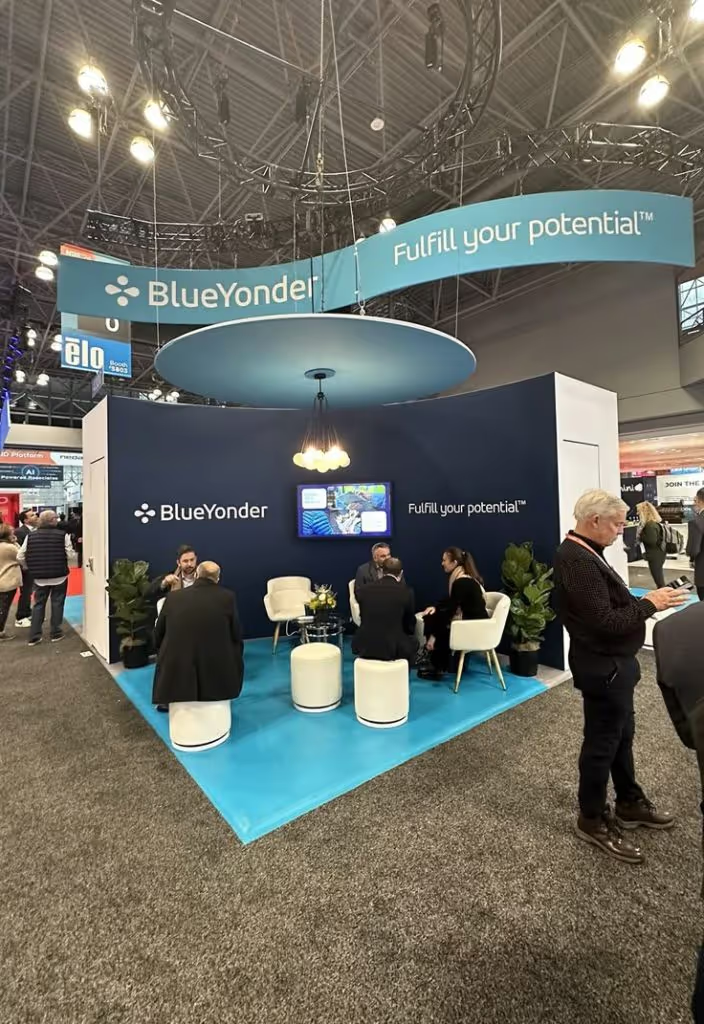
Post-Show Follow-Up: Where ROI Actually Happens
Leading a trade show effort as a CMO means more than delivering a polished on-site presence. You’re also accountable for making sure that presence turns into a pipeline. And more often than not, it’s what happens after the event that determines whether the investment pays off.
The challenge? Most teams don’t follow through. In fact, 94% of marketers say their companies fail to follow up effectively on trade show leads. Here’s how to close that gap and turn post-show momentum into real, measurable results.
Move Fast While Interest Is High
If you want your follow-up to be effective, it needs to start before the event even begins. Too many teams wait until after the show to figure out what comes next and by then, it’s already too late. Nearly 40% of exhibitors don’t reach out for three to five days, and by that time, your conversation is buried under a week’s worth of emails.
Set the groundwork early. Have your follow-up emails drafted, responsibilities assigned, and CRM workflows ready to go. Within 24 to 48 hours of the event, your team should be sending thoughtful messages, sharing relevant content, and, for high-priority leads, making direct calls.
Timely follow-up also reinforces credibility. It tells prospects you were prepared, that you listened, and that your team knows how to move fast when it matters.
Make Personalisation the Standard, Not the Exception
If you’re sending the same follow-up email to everyone, you’re already behind. Your prospects have likely spoken to five other vendors and they’ll remember the one that actually listened. So don’t just thank them for stopping by. Mention what you talked about. Point them to a relevant case study or recap the demo they saw.
Use your notes and CRM tags to segment by interest, urgency, or role. Not everyone’s ready to buy right away, but that doesn’t mean the conversation ends. Share a follow-up webinar, invite them to your next event, or send a short recap video that keeps the momentum going.
These small gestures build something bigger. They show your team is thoughtful, responsive, and genuinely invested not just in the sale, but in the relationship.
Measure What Matters and Learn From the Results
CMOs will always face one question after a trade show: was it worth it?
Answering that takes more than a gut feeling. You need the numbers. Start by tracking how many leads turned into qualified opportunities, how many moved through the funnel, and how much revenue was tied back to the event. Metrics like cost per lead, pipeline value, and deal velocity help give a clearer picture of performance.
For context: many B2B teams aim for a 3x–5x return on trade show investment, and some Fortune 500 brands report achieving 5:1 ROI. But ROI isn’t only about the deals you closed. What did your team hear on the floor? Did your messaging resonate? Were you speaking to the right audience? Gathering these qualitative insights is just as important.
One approach we’ve seen work well is creating a post-show scorecard. Track conversion rates, booth traffic, team feedback, supplier reliability, and follow-up engagement in one place. It turns event debriefs into strategic inputs. That way, every show moves you one step closer to a more efficient, higher-performing event strategy.
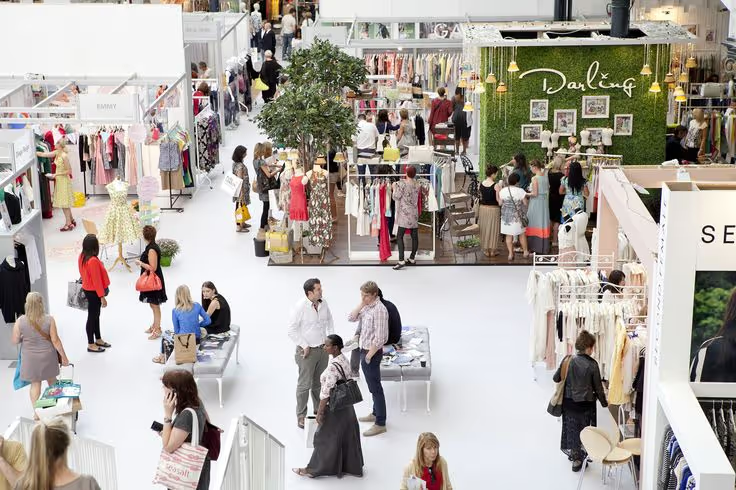
The Bottom Line
Trade shows are becoming more powerful with the right strategy behind them. When planned and executed well, they drive pipeline, deepen relationships, and elevate your brand in ways few other channels can.
As a CMO, it’s your job to make sure every event aligns with your business goals, engages the right audience, and delivers measurable ROI that stands up in front of senior leadership. That takes operational clarity, smart resource allocation, and tight execution across every phase.
At Lumix, we’re building the tools event teams need to run smoother, smarter, and more confidently, bringing supplier management, spend visibility, and sourcing into one platform so you can focus on delivering experiences that actually move the needle.
If you’re looking to simplify the operations of your next trade show, we’re here to help.
Lumix Blogs
Get the indise scoop: the latest tips, tricks, & product updates

In House Vs Agency. Which Should You Choose To Manage Events
Compare in house vs agency event management models. Understand the trade-offs in cost, control, ROI and explore where a hybrid approach fits best.
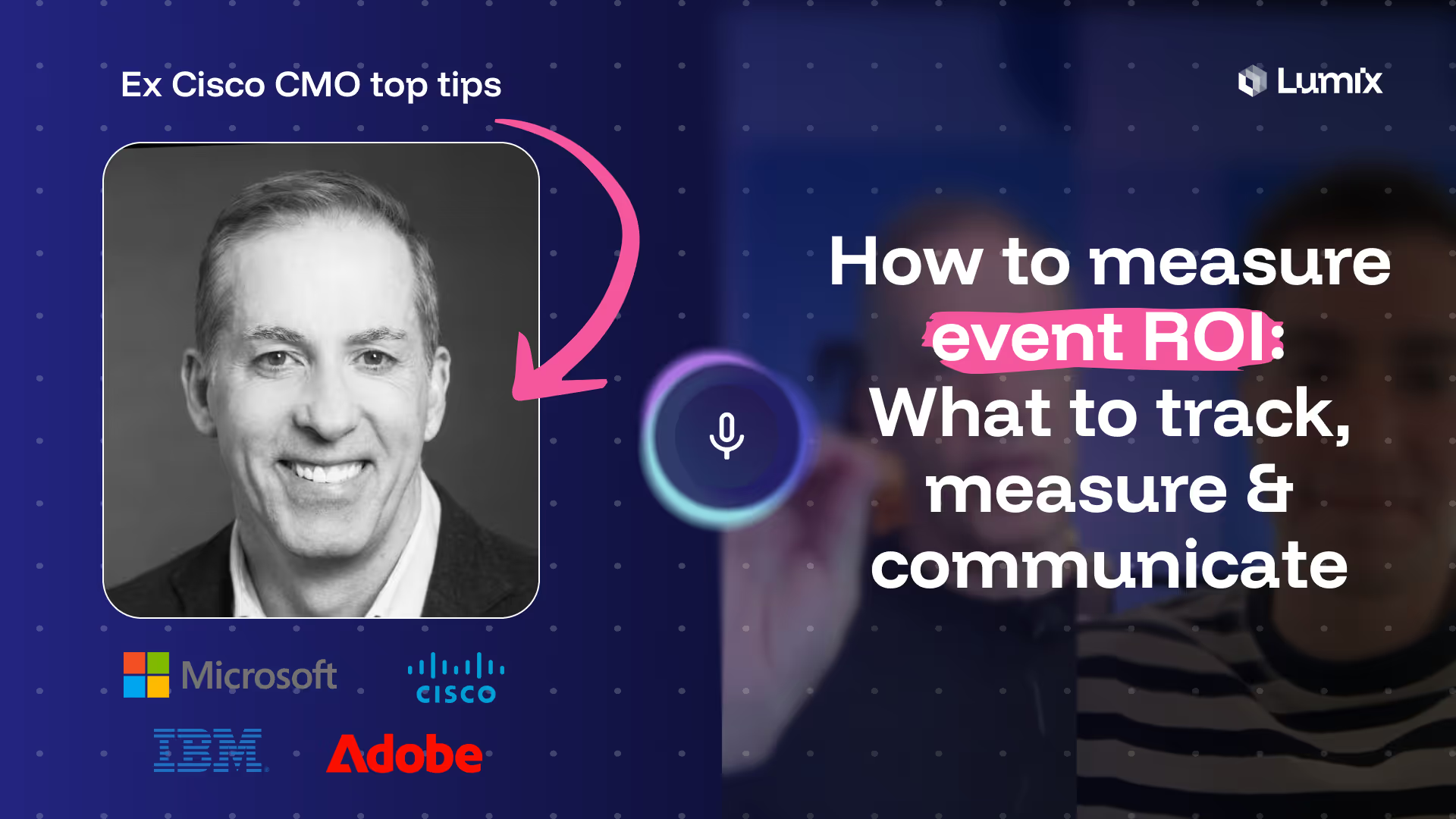
Proving Event ROI: How to Speak Finance’s Language with Insights from Mark Phibbs, ex-Adobe & Cisco CMO
“ROI isn’t just about counting heads at a booth, it’s about understanding how events accelerate pipeline, loyalty and revenue.”
Frequently Asked Question
Have another question? Please contact our team!
Yes. The platform provides side-by-side quote comparisons that show what’s included (and what isn’t) in each proposal. You’ll see cost breakdowns, supplier notes, and Lumix’s benchmarked pricing insights all designed to help you make confident, data-driven decisions.
Yes. You can upload and store your existing brief templates, or use Lumix’s AI-assisted builder to generate new ones. The platform also learns from your past events, so future briefs can be created faster with pre-filled details and preferred suppliers.
Absolutely. Lumix is built for flexibility. You can update or amend briefs at any time through quote revisions. When you make changes, suppliers are automatically notified and can adjust their quotes accordingly, keeping everything transparent and version-controlled.
A Lumix-vetted supplier has been verified for legal identity, financial health, insurance, certifications, and recent performance. We don’t just check paperwork once — we continuously monitor suppliers’ live performance on the platform to ensure they meet professional, safety, and compliance standards.
Our vetting process happens in three levels: Verified: Baseline identity and compliance checks, legal registration, sanctions screening, insurance, and minimum financial health scores. Certified: Category-specific evidence such as food-hygiene, rigging, or data-security certifications, depending on the supplier’s role. Audited: For high-value or critical suppliers, we add deeper due diligence including third-party audits, ESG assessment, and verified delivery KPIs on Lumix.
Yes. We align our vetting standards with leading UK and global frameworks such as Achilles, Hellios FSQS/JOSCAR, Avetta, SafeContractor, and EcoVadis. Where appropriate, Lumix integrates or recognises these certifications within our supplier profiles to avoid duplicate checks.

